Let’s tell a story. In fact, this is a part of the history of WordPress, since we are going to focus solely on the Plugin Directory.
Before what we know today as Plugins, there were what were called “hacks”, which was a way to inject code into WordPress inherited from b2, but involved modifying the core files. However, in May 2004, with the launch of WordPress 1.2, the plugin system was introduced, opening a world of possibilities for developers to extend WordPress.
It wasn’t until January 2005 (during the times of versions 1.4 and 1.5), that the WordPress plugin repository was launched, hosted at dev.wp-plugins.org. This repository is nothing like what we know today. It was a plain code repository, whose appearance was made more user-friendly thanks to a wiki.

As can clearly be seen, searching for a plugin had nothing to do with the experience we could begin to enjoy later on, up to the present day. It was strictly a list of plugins with the name, a link, and a description of what the plugin did.
A Look at the Evolution of the WordPress Plugin Directory
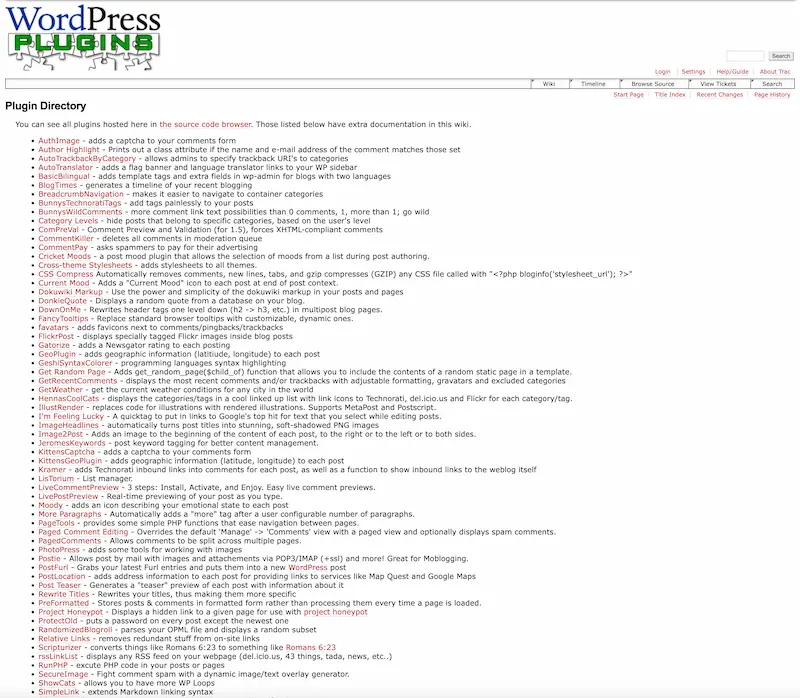
Meanwhile, on the WordPress.org page, we were promised a plugin section where we could “soon” search for and download plugins in a more user-friendly manner.

In any case, the original repository inspired developers to share their code with the rest of the world, thus planting the seed for the WordPress.org plugin directory.
Finally, the plugin directory was launched in March 2007 (during the time of WordPress version 2.1), more than two years after the launch of the original repository, transitioning plugins from being hosted on developers’ personal websites to being gathered all in one place. Moreover, this also became a showcase for the developers themselves.
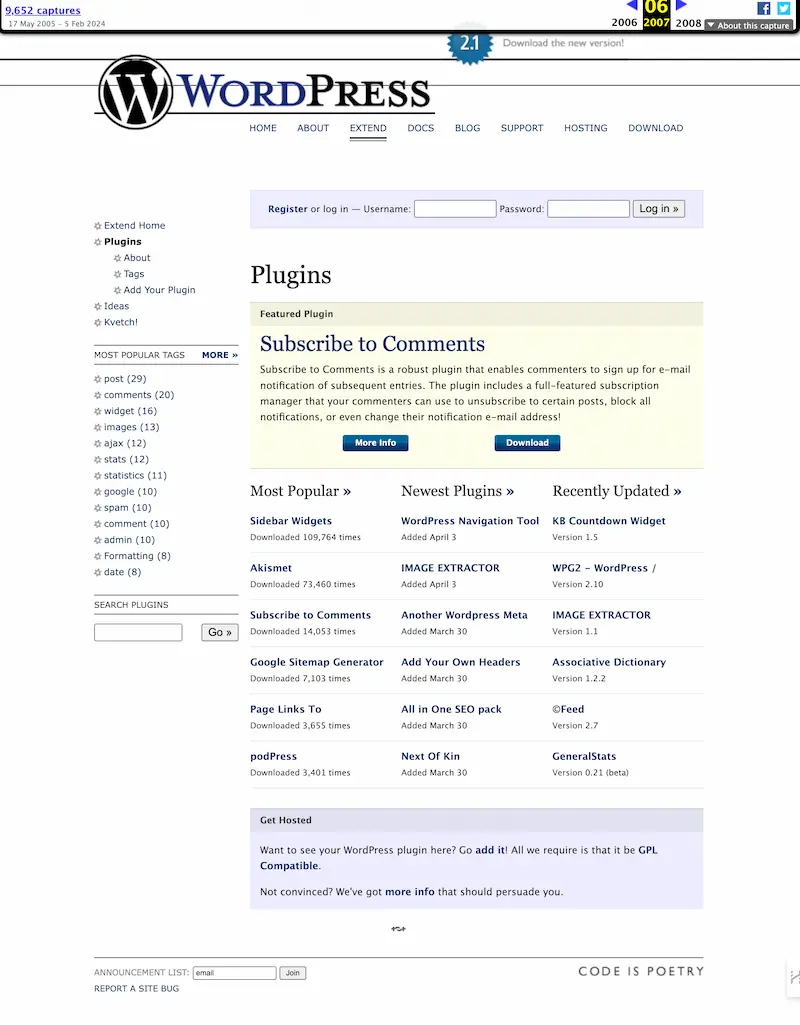
A few WordPress versions later, specifically with version 2.7 in December 2008, the plugin directory was integrated into the WordPress admin dashboard.
The design of this directory has evolved over time and, in its first redesign in the spring of 2008, something that has greatly helped us tell this story was added—the number of plugins available in the directory.

This information remains visible to this day in the directory we know and visit almost daily to search for, download, or recommend plugins.
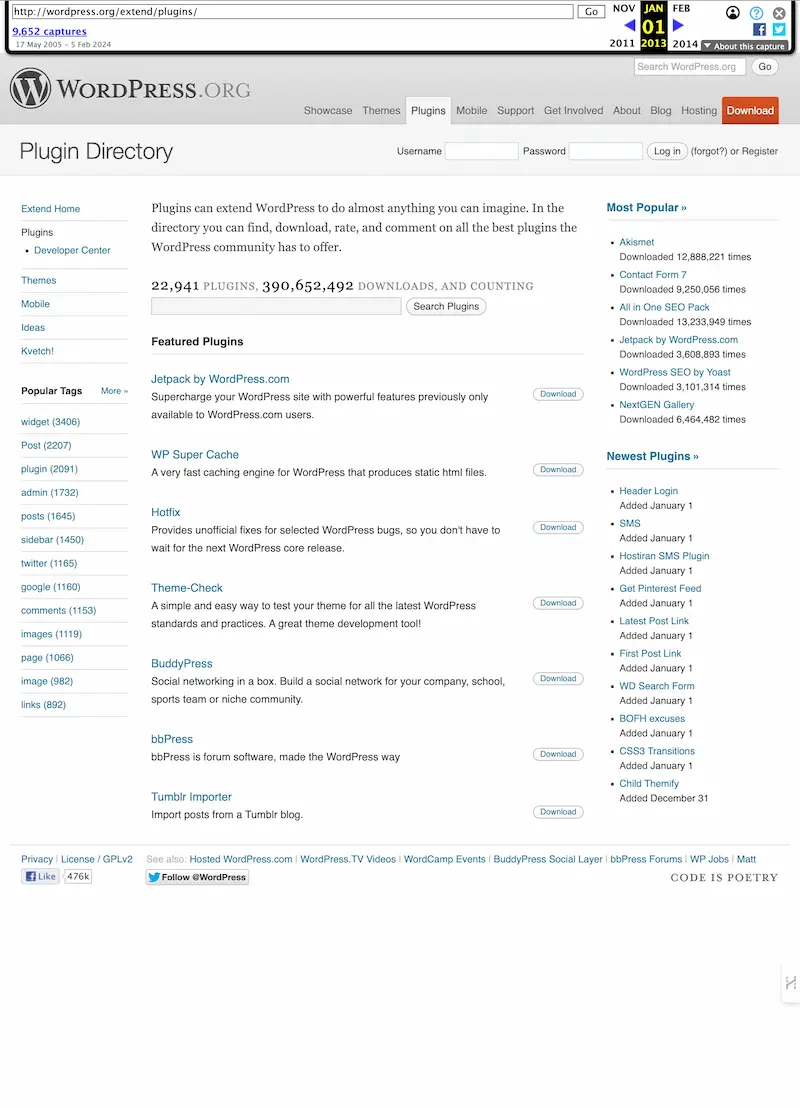
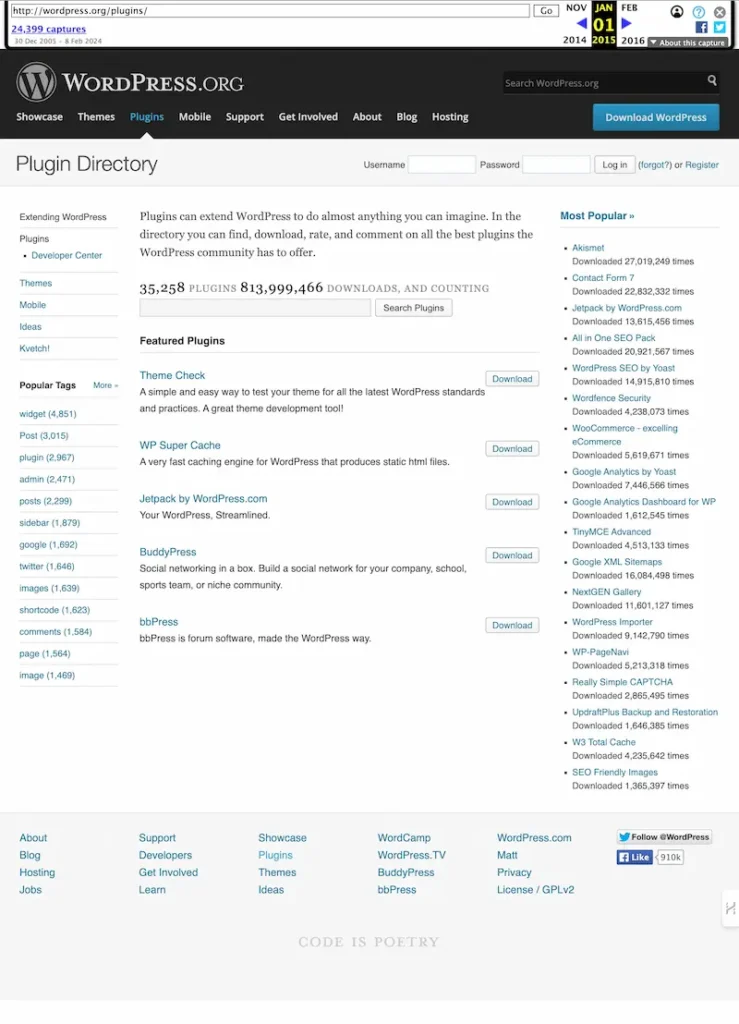
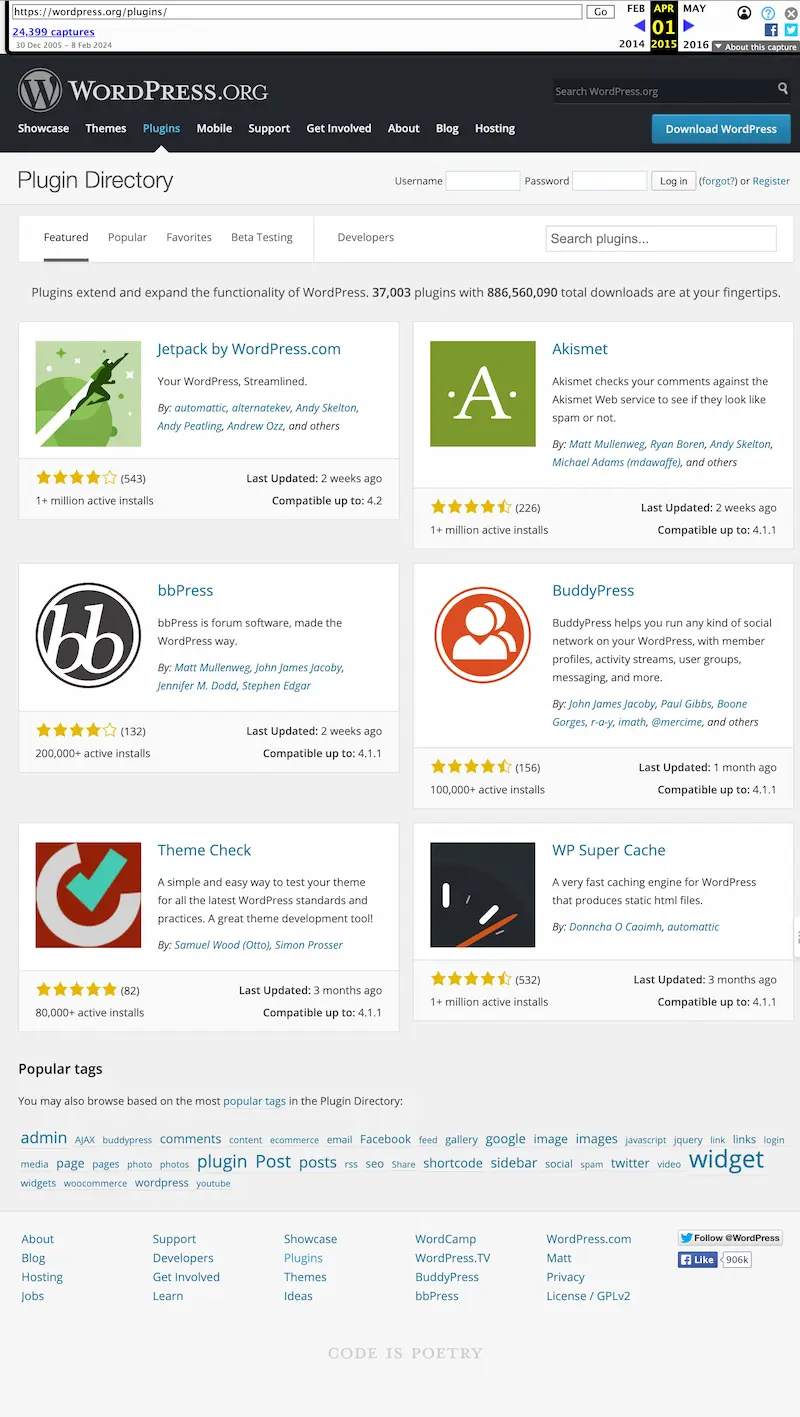




After collecting data on the number of plugins in the directory from its beginnings (when it started to be displayed on the website) to the present, we have been able to see the evolution of the number of approved plugins in this directory throughout its history. This compilation was made possible thanks to Wayback Machine, by recording the number of plugins from the website on the first capture of the day on the first of each month from October 2007 to the present, or if not available, the closest to this date.
This has allowed us to trace a curve with the number of plugins approved for publication in the plugin directory from the time data started being available to the present.

We can observe in the curve that the growth in the number of plugins within the directory was completely linear, and did not stop, until September 2018. From this point, there was an inflection, probably due to the plugin review team conducting a process of purging plugins within the directory.
During this time, we see a decline in the number of plugins, a brief plateau occurs, and from early 2020, more plugins begin to be approved, reaching a peak of 60,000 plugins.
In May 2023, Mika Epstein handed over the reins to the new plugin review team, and it was at this moment that a new cleanup of plugins took place, keeping the number of plugins in the directory constant. In reality, it is difficult to see a tangible change.
Another way to view the evolution of the number of plugins within the directory might be to look at the change over time between the number of plugins at the end of the year and the number of plugins at the beginning of the year. In this way, for each year, we can clearly see how much the number of plugins in the directory has increased or decreased (if the latter has ever occurred).

As we can see, every year there has been an increase in the number of plugins from the beginning to the end of the year, except in 2023, where there was a reduction in the number of available plugins. Additionally, we can clearly see how 2018 was the year when the growing pace of plugins was curbed, most likely thanks to a process of cleaning up old plugins. Nonetheless, we will try to uncover this mystery in the future.
There was a time when we knew how many plugins were downloaded.
Between 2007 and 2017, alongside the number of plugins available in the plugin directory, we could also see the number of downloads. This interesting data allowed us to glimpse how the community behaved during those times when we could extend WordPress.

If we look at the growth in the number of downloads over the years, we see that for almost a year and a half, users were quite shy. But, by mid-2009, downloads did nothing but grow. At least until 2019, the year in which we stopped receiving this information. A pity.

When we correlate the number of downloads with the number of plugins, we see that until there were 10,000 plugins published, there were hardly any downloads. From this point on, there was exponential growth.

In conclusion, one does not need to study engineering to deduce that plugins are the soul of WordPress. However, it would have been interesting to follow this evolution in the following years, up to the present day.
This has been a brief review of the history of the plugin directory through its numbers. We would love to hear how the key players, the people involved in moderating the plugins published in the directory at different times in the history of WordPress, experienced this story.
Would you like them to share their experiences themselves? We certainly would, and who knows if we might be able to make that happen in the future.

Leave a Reply